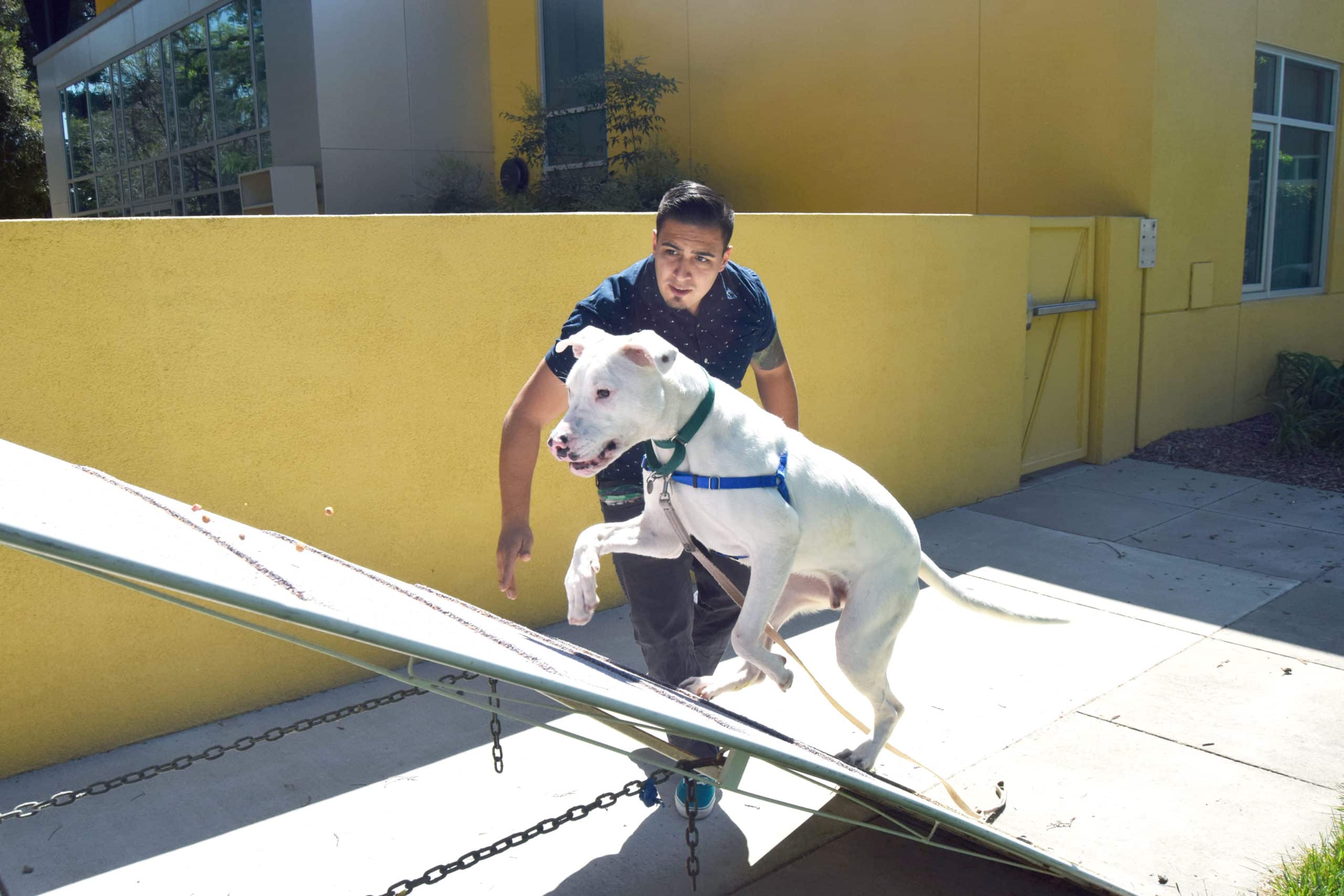
Dogs are highly social creatures who are not naturally programmed to spend long days alone. Practice and training is important for puppies and newly adopted dogs with the goal to prove to your pet that they are safe and to show them that alone time can be fun! With proper management and training, separation and confinement anxiety can be avoided. Here are several suggestions for you to start implementing now.
Low-Key Departures and Arrivals
During the 10-15 minutes before you leave the house, strive for a calm, neutral atmosphere. Avoid grand gestures of hugging, kissing, or high energy play or petting your dog. It may be best to simply ignore the dog during those last 10-15 minutes before you leave.
Similarly, when you arrive home, acknowledge your dog quietly if your dog is calm. If your dog is jumping on you, tearing around the house, whining or crying with excitement, or otherwise appears excited, then ignore your dog until they have visibly settled down, and then calmly engage with your dog.
Long-Lasting Treats
Audition a variety of long-lasting treats or chews to find out what your dog will enjoy the most. You’ll want to experiment with these treats before you actually leave the dog home alone with them. If the dog doesn’t eat the treat when you are around, then there is an excellent chance that they won’t eat it when home alone either. When you find the treat your dog loves, be sure to only give them this treat before departing the home so it remains special. Chewing and licking a stress relieving, self-soothing behaviors, so providing appropriate things for our dogs to engage with does more than just keep them busy, it helps them relax!
Here are some ideas:
- KONGs or other food dispensing toys stuffed with kibble or treats, sealed with peanut butter (dog safe!), cottage cheese, yogurt, canned dog food, or baby food, and then frozen
- Food dispensing toys: Tug-a-Jug, Twist ‘n Treat, Squirrel, Dude, The Buster Cube, The Tricky Treat Ball, The Atomic Treat Ball, and The TreatStik
- Hiding kibble or treats in cardboard or paper products that your dog has to tear apart to get to the food: cereal boxes, paper towel rolls, egg cartons, paper bags, etc…
Practice Alone Time
Practicing being alone is important, especially for puppies. Identify a comfortable, safe area for your dog to be alone — in a room separated by a baby gate or in a crate, if crate trained (please refer to our All About Crate Training blog post. At least once a day, set your dog up in this area with a long-lasting treat, some of their favorite toys, a comfy bed, and some water. It may take some time to find the best space for this. Some dogs do best in spaces where they can see all the household action and others have an easier time settling if they cannot see or hear as much activity. Be prepared with a couple of variable options and see where your dog does best.
Start by only leaving them alone for very short periods of time (one to five minutes), and you can vary between being completely alone and sitting nearby but not engaging. Vary the length of absences so they aren’t predictable (dogs are very good at keeping time!). This is a great time to work on home chores that might have you out of the room like putting away laundry or making dinner. If alone time is a normal part of daily life, it becomes far less stressful.



